Hyundai i30 Wagon vs Renault Arkana – Which model is better for everyday use?
Both models have their strengths – but which one suits you more?
Compare performance, efficiency, price and space directly: Hyundai i30 Wagon or Renault Arkana?
Costs and Efficiency: Price and efficiency are often the first things buyers look at. Here it becomes clear which model has the long-term edge – whether at the pump, the plug, or in purchase price.
Hyundai i30 Wagon has a slightly advantage in terms of price – it starts at 24800 £, while the Renault Arkana costs 28500 £. That’s a price difference of around 3609 £.
Fuel consumption also shows a difference: Renault Arkana manages with 4.70 L and is therefore distinct more efficient than the Hyundai i30 Wagon with 5.70 L. The difference is about 1 L per 100 km.
Engine and Performance: Under the bonnet, it becomes clear which model is tuned for sportiness and which one takes the lead when you hit the accelerator.
When it comes to engine power, the Renault Arkana has a slight edge – offering 143 HP compared to 140 HP. That’s roughly 3 HP more horsepower.
In acceleration from 0 to 100 km/h, the Hyundai i30 Wagon is to a small extent quicker – completing the sprint in 9.80 s, while the Renault Arkana takes 10.80 s. That’s about 1 s faster.
In terms of top speed, the Hyundai i30 Wagon performs slightly better – reaching 197 km/h, while the Renault Arkana tops out at 172 km/h. The difference is around 25 km/h.
There’s also a difference in torque: Hyundai i30 Wagon pulls somewhat stronger with 253 Nm compared to 205 Nm. That’s about 48 Nm difference.
Space and Everyday Use: Beyond pure performance, interior space and usability matter most in daily life. This is where you see which car is more practical and versatile.
Both vehicles offer seating for 5 people.
In curb weight, Hyundai i30 Wagon is somewhat lighter – 1316 kg compared to 1510 kg. The difference is around 194 kg.
In terms of boot space, the Hyundai i30 Wagon offers distinct more room – 602 L compared to 480 L. That’s a difference of about 122 L.
In maximum load capacity, the Hyundai i30 Wagon performs clearly perceptible better – up to 1650 L, which is about 387 L more than the Renault Arkana.
When it comes to payload, Hyundai i30 Wagon slightly takes the win – 524 kg compared to 451 kg. That’s a difference of about 73 kg.
Who comes out on top?
Overall, the Hyundai i30 Wagon shows itself to be leaves the rival little chance and secures the title of DriveDuel Champion.
It convinces with the more balanced overall package and proves to be the more versatile choice for everyday use.
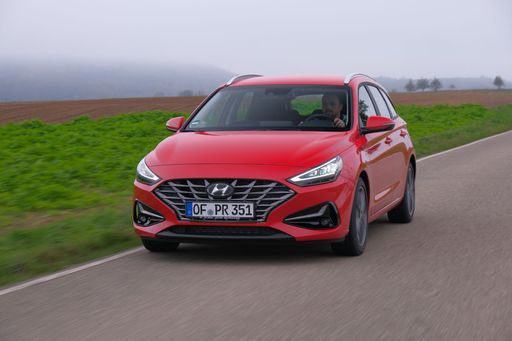
Hyundai i30 Wagon
Hyundai i30 Wagon
The Hyundai i30 Wagon offers a blend of practicality and style, making it a popular choice for families and those in need of extra space. Its sleek exterior and comfortable interior provide a pleasant driving experience, while advanced safety features ensure peace of mind on the road. The i30 Wagon stands out with its impressive fuel efficiency and reliability, catering to both urban and rural lifestyles.
details @ hyundai.news
@ hyundai.news
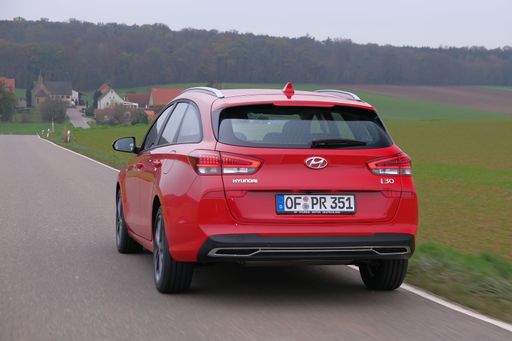 @ hyundai.news
@ hyundai.news
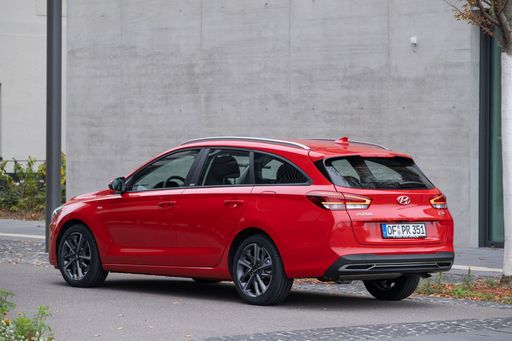 @ hyundai.news
@ hyundai.news
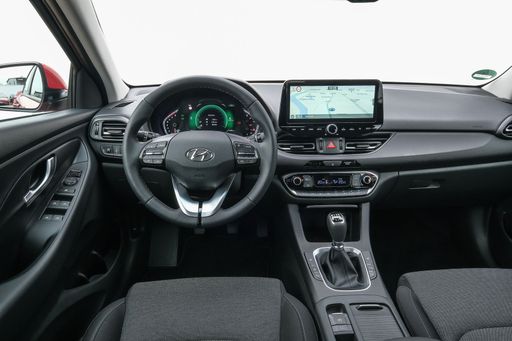 @ hyundai.news
@ hyundai.news
 @ hyundai.news
@ hyundai.news
Renault Arkana
The Arkana stands out with its striking coupe-SUV design, blending sporty aesthetics with practicality. Its bold silhouette and high ride height offer a unique presence on the road, attracting attention wherever it goes. Inside, the Arkana combines modern technology with comfort, making it a versatile choice for both city driving and weekend getaways.
details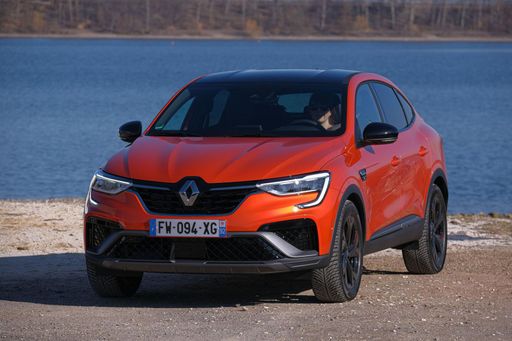 @ Renault
@ Renault
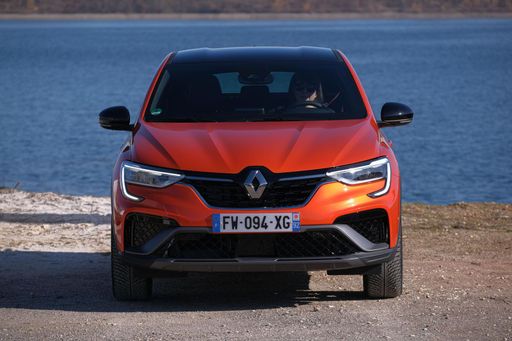 @ Renault
@ Renault
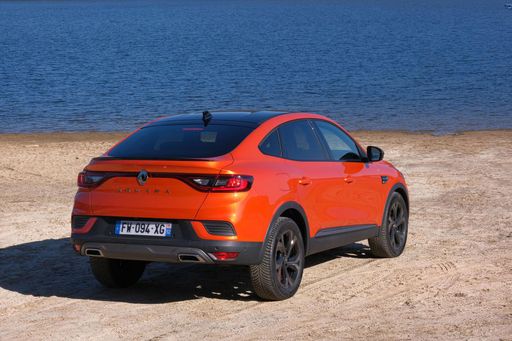 @ Renault
@ Renault
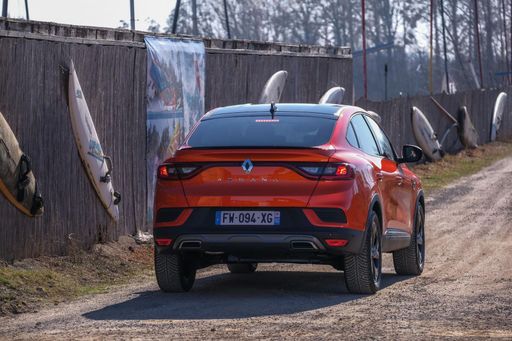 @ Renault
@ Renault
 @ Renault
@ Renault
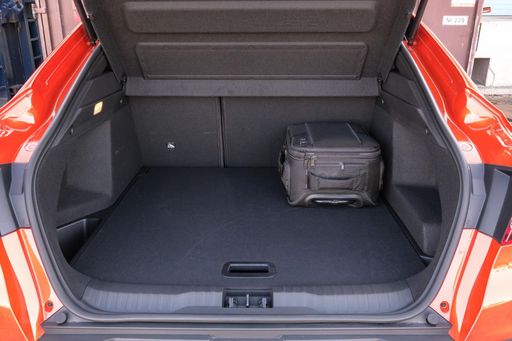 @ Renault
@ Renault

|

|
|
|
|
Costs and Consumption |
|
|---|---|
|
Price
24800 - 30100 £
|
Price
28500 - 31900 £
|
|
Consumption L/100km
5.7 - 6 L
|
Consumption L/100km
4.70 L
|
|
Consumption kWh/100km
-
|
Consumption kWh/100km
-
|
|
Electric Range
-
|
Electric Range
-
|
|
Battery Capacity
-
|
Battery Capacity
0.60 kWh
|
|
co2
130 - 136 g/km
|
co2
106 g/km
|
|
Fuel tank capacity
50 L
|
Fuel tank capacity
50 L
|
Dimensions and Body |
|
|---|---|
|
Body Type
Estate
|
Body Type
SUV
|
|
Seats
5
|
Seats
5
|
|
Doors
5
|
Doors
5
|
|
Curb weight
1316 - 1461 kg
|
Curb weight
1510 kg
|
|
Trunk capacity
602 L
|
Trunk capacity
480 L
|
|
Length
4585 mm
|
Length
4568 mm
|
|
Width
1795 mm
|
Width
1821 mm
|
|
Height
1475 mm
|
Height
1576 mm
|
|
Max trunk capacity
1650 L
|
Max trunk capacity
1263 L
|
|
Payload
439 - 524 kg
|
Payload
451 kg
|
Engine and Performance |
|
|---|---|
|
Engine Type
Petrol, Petrol MHEV
|
Engine Type
Full Hybrid
|
|
Transmission
Manuel, Automatic
|
Transmission
Automatic
|
|
Transmission Detail
Manual Gearbox, Dual-Clutch Automatic
|
Transmission Detail
Automatic Gearbox
|
|
Drive Type
Front-Wheel Drive
|
Drive Type
Front-Wheel Drive
|
|
Power HP
100 - 140 HP
|
Power HP
143 HP
|
|
Acceleration 0-100km/h
9.8 - 13.3 s
|
Acceleration 0-100km/h
10.80 s
|
|
Max Speed
178 - 197 km/h
|
Max Speed
172 km/h
|
|
Torque
172 - 253 Nm
|
Torque
205 Nm
|
|
Number of Cylinders
3 - 4
|
Number of Cylinders
4
|
|
Power kW
74 - 103 kW
|
Power kW
105 kW
|
|
Engine capacity
998 - 1482 cm3
|
Engine capacity
1598 cm3
|
General |
|
|---|---|
|
Model Year
2024
|
Model Year
2025
|
|
CO2 Efficiency Class
D, E
|
CO2 Efficiency Class
C
|
|
Brand
Hyundai
|
Brand
Renault
|
What drivetrain options does the Hyundai i30 Wagon have?
Available configurations include Front-Wheel Drive.
The prices and data displayed are estimates based on German list prices and may vary by country. This information is not legally binding.
